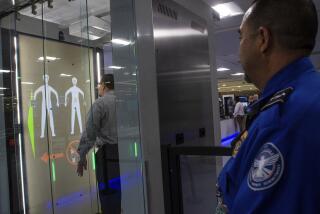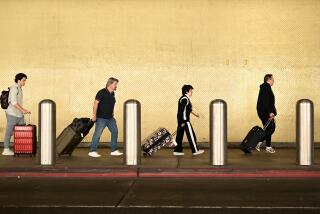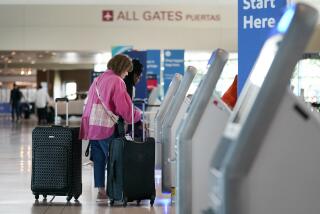Traveling in 2014? Here are 14 things to know
New players in the ever-annoying world of air carriers. New perks for visitors to Vegas. New ways to get around town. Travel continues to evolve, sometimes in great ways, sometimes in ways that make us want to stick out our tongues. The travel treat and the potential travel tantrum? 2014 promises to provide both. Here’s a look.
1. You’ll probably pay more for a hotel room. That’s the word from Peter Van Dorn, co-founder and chief executive of PointsHound, an online booking source for hotels. (Added benefit to that website: It helps the traveler maximize the accumulation of award points by offering hotels that match with whatever loyalty programs you belong to.) “2013 was a good year overall, and 2014 will be better,” he says. “People are just traveling more.” Which means hotels will be more fully booked, so expect the average daily rate to increase. In cities in which chains are prevalent, Van Dorn suggests trying to book with independent and boutique hotels.
2. If you want to find a great rate on hotels outside of independent and boutique hotels, you’ll need to have a bit of gambler in your soul, says travel guru John DiScala, better known as JohnnyJet. Your best shot at finding bargains for hotels, which always worry about rate integrity and thus are less inclined to tip their hands about costs, may be HotelTonight (an app that offers same-day hotel bookings) and Priceline (which doesn’t reveal the name of the hotel, but you’ll find plenty of hints at BiddingforTravel.com). Or, he says, buy a bundled airfare and hotel package. You often get a good deal because the hotel rate is disguised. (Best to price your itinerary and compare before you make your final selection.)
3. Here’s the good news — for Vegas, at least. You may now be able to use or earn loyalty points from your hotel awards program in Sin City. The big kids on the block — we mean the customer loyalty program block — aren’t always the big kids on the Strip. The dozen Vegas MGM properties have hooked up with Hyatt’s loyalty program, and Caesars has linked arms with Starwood’s program.
4. Your airline ticket will cost more, and that’s before you factor in the drivers of ticket price, says Rick Seaney, co-founder of FareCompare.com: fuel costs, the economy, supply and demand. You’ve always paid a security fee; it used to be $2.50 for each leg of your ticket. Under the budget deal that Congress OKd in December, that increases to $5.60 for each one-way leg.
5. If you want to know about flash sales on airline tickets, buddy up with Twitter. Travel guru DiScala recommends (besides individual airlines) @TheFlightDeal, @Airfarewatchdog and, of course, @JohnnyJet. You can see his list of airlines at twitter.com/JohnnyJet/airlines.
6. If you have a mobility issue, river cruising might become easier for you. Those languorous trips have become the hottest ticket in cruising. More demand means more new ships, and those newer ships incorporate elevators, lacking on some older vessels. Among the lines, Viking is scheduled to launch 14 ships in 2014; Avalon Waterways will add three new ships, increasing capacity by 10%. Aging baby boomers find river cruising particularly attractive, says Linda Garrison, cruise expert for About.com, because of their all-inclusive price, a pace that’s less frenetic than the shorter party-hearty ocean trips and the opportunity to stay connected with the device(s) of choice because of proximity to land. Compared with oceangoing cruises, river cruises may look more expensive, but don’t be deceived, Garrison says. Most river cruises are all-inclusive, whereas ocean cruises have unbundled some of the costs.
7. Polio hasn’t been eradicated. It was on track to disappear for good in 2013, but outbreaks were reported in Syria and Pakistan, among other countries. Your chances of contracting the disease are small because you’ve probably been immunized, but it’s a good reminder to make sure your shots are up to date before you go anywhere, and that includes the U.S. (When was your last tetanus shot? Did you have a flu shot?) To learn more about what you need, see the Centers for Disease Control website, which gives country-specific recommendations: wwwnc.cdc.gov/travel.
8. You may be able to get through airport security a little faster. Toward the end of 2013, the Transportation Security Administration introduced a PreCheck program that, for $85, allows you to become a trusted traveler (pending a background check) and to whisk through security, becoming the third way to get expedited screening. New centers that help you complete that process have opened in Glendale, Carson and Signal Hill. The TSA also has been using “managed inclusion,” offering selected travelers faster screening. The random selection process means you’re at the mercy of whatever criteria are used to select you, so there’s no promise you’ll get to scoot. There isn’t with the three other PreCheck programs either, because that’s part of security, but you’re more apt to get to skip the shoes-belt-jacket-laptop-liquids removal. The PreCheck expedited screening program is now in use at 113 airports, including Burbank, Ontario, LAX, Long Beach and John Wayne/Orange County.
9. You can hold down your ski-lift ticket costs, but you must know when to buy and go. Buying a lift ticket for a ski resort is becoming more like booking an airline ticket, with discounts for advance purchases. It used to be that the pricing was X dollars a day and that was it. No more. “My advice and counsel: Spend a little time shopping [lift ticket prices] and incorporate that into the your travel planning,” says Michael Berry, president of the National Ski Areas Assn. Some ski area websites are doing what the airlines have done: creating a matrix that shows pricing for various days. Kirkwood at Tahoe, for instance, recently listed $64 for an adult all-day ticket on Jan. 26 purchased online at least three days in advance. A six-day lift ticket starting Feb. 15 showed at $360, about $60 a day, which includes the President’s Day holiday weekend. A two-day pass for Colorado’s Aspen-Snowmass, for Feb. 15 and 16, if purchased seven days in advance, was listed at $198; if you wanted only Feb. 15, it was $124.
10. You’ll need to add new words to your ground transportation vocabulary: Uber, Lyft (whose cars wear mustaches), GroundLink and Sidecar. These ride services are summoned by iPhone app; each works a little differently, but they are muscling in on traditional taxi business by offering improvements to cab service. Uber, which I recently used, is cashless; my fare and the tip were charged to my credit card on file. These services are part of the “collaborative consumption” movement that gave us AirBnB, the hotel alternative. The idea is just what your mom told you when you were a kid: Sharing is a good thing. But know, at least, it’s not quite as good when demand is high; some companies raise their prices.
11. But don’t count out taxis. As part of the “e-hail” craze, TaxiMagic and Hailo, among others, allow you to use an app to hail a traditional cab. If it feels more secure to get in a car that’s been inspected and whose driver is licensed (as is required in L.A., but not everywhere), a traditional cab may be for you. Not an app fan? There’s always the good old phone call.
12. Renting a car? Prepare to pay more this year in the U.S, according to American Express’ Business Travel Forecast. Thanks to acquisitions, there’s less competition among rental car agencies, and the cost of new cars will go up. Result: an increase of as much as 1.5% in North American rental car costs, it predicts. That’s $4.50 on a $300 car rental, which isn’t catastrophic but can add up for the frequent renter.
13. If you’re looking to go to Europe for less, look to European low-cost carriers. Norwegian Air Shuttle “is just starting to penetrate the U.S. market,” says Warren Chang, vice president and general manager of Fly.com, an airfare search engine. In early January, I found an L.A.-Copenhagen round trip for randomly chosen May 15-22 for about $625 and a fare to Helsinki on the same dates for $799. Best fare I found on a U.S. carrier was $1,144 on United and $1,112 on American, respectively. (These fares may no longer be available.) Also check out Aeroflot (not generally a budget carrier but competitive), AirBerlin and FinnAir, among others.
14. If travel costs more in 2014, blame it all on people of a certain age. And by a certain age, we’re talking about baby boomers, of whom there are 75 million in the U.S. The top end of the boomer generation is hitting retirement age. Look for an increase in demand, now that travel is no longer the big deal it was for their parents’ generation. And boomers do, apparently, need to be cheered up: They are consistently more downcast about just about everything than the generation before or after, according to a 2010 report from the Pew Research Center. Best antidote for that? Travel — the anticipation and the act. See the rest of this week’s Travel section for ideas.
More to Read
Sign up for The Wild
We’ll help you find the best places to hike, bike and run, as well as the perfect silent spots for meditation and yoga.
You may occasionally receive promotional content from the Los Angeles Times.






